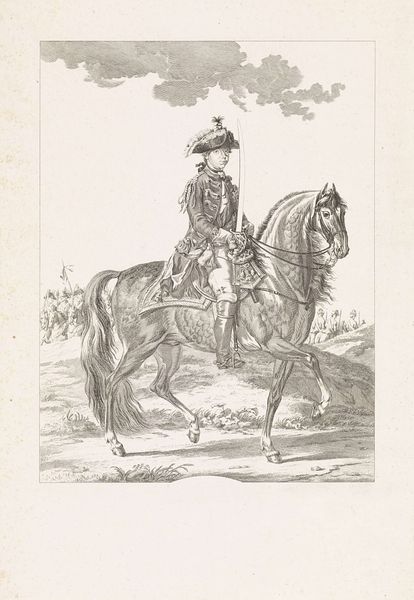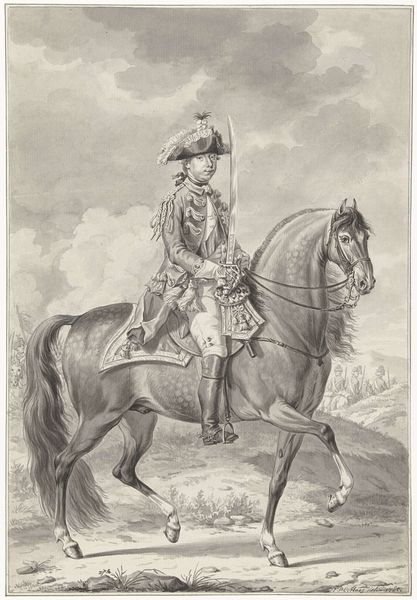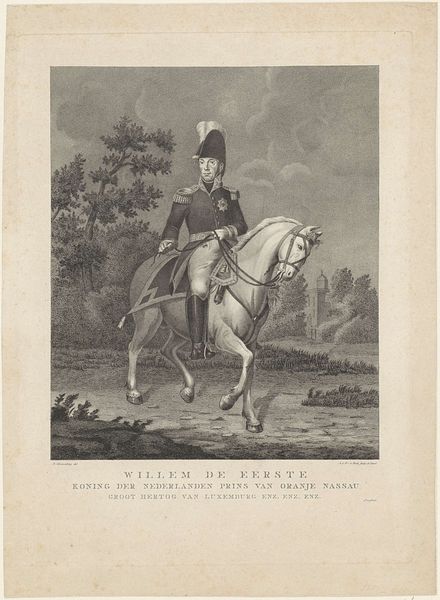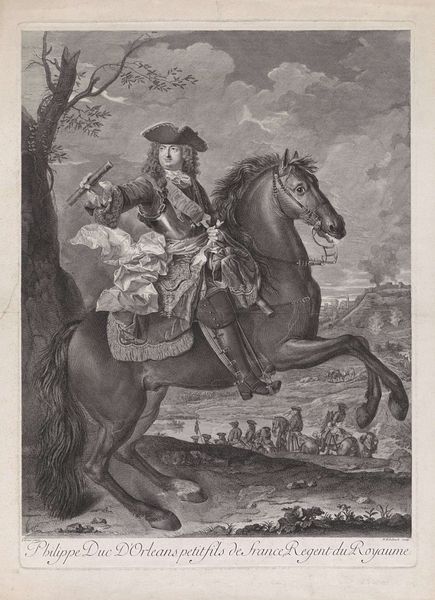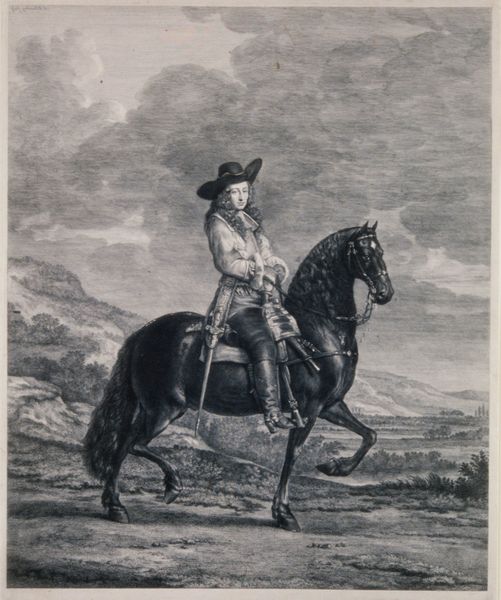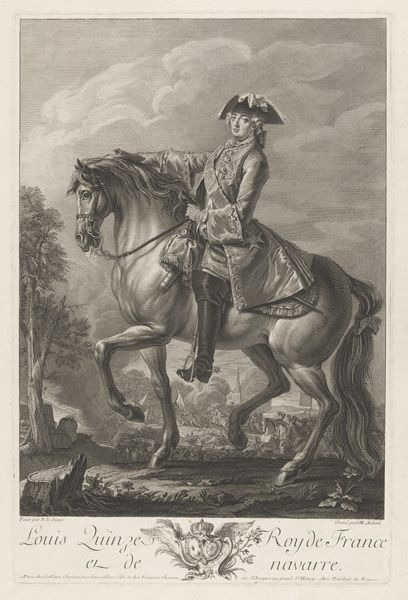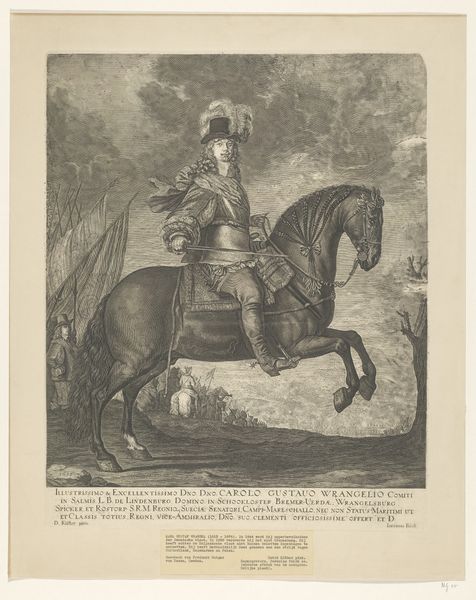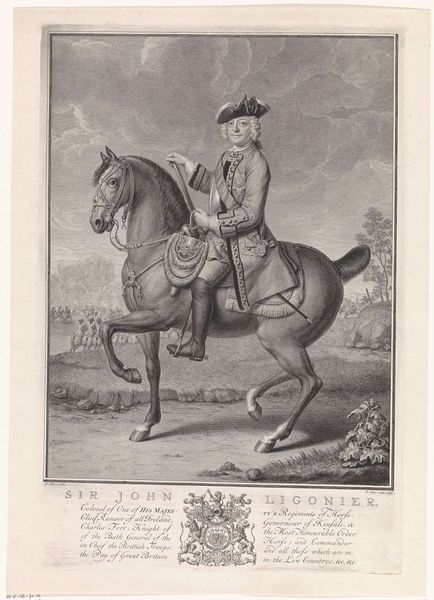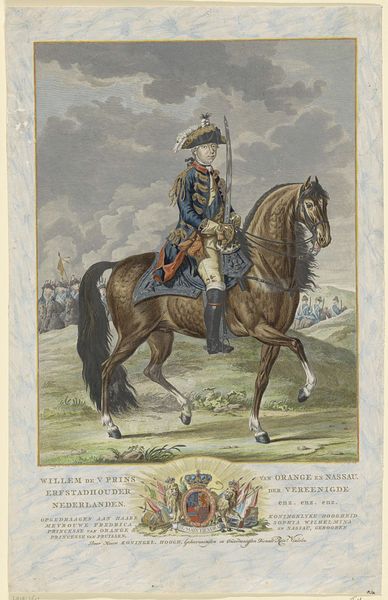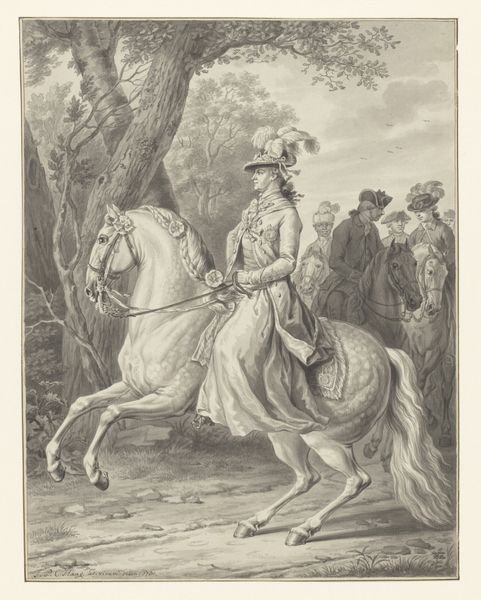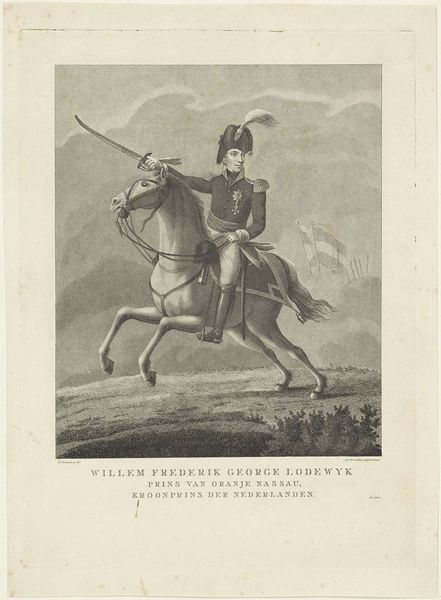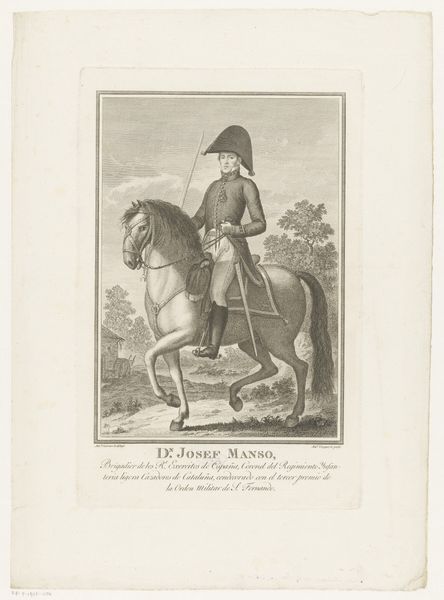
Dimensions: height 430 mm, width 299 mm
Copyright: Rijks Museum: Open Domain
Editor: This is a print from 1779, titled "Ruiterportret van Willem V, prins van Oranje-Nassau," created by Reinier Vinkeles. It's quite striking; the detail achieved through engraving is impressive. What aspects of its visual structure particularly stand out to you? Curator: The composition strikes me first. The artist has divided the space in a carefully considered manner. Note the visual weight concentrated on the right with the Prince and horse, balanced against the more diffused background detail of soldiers on the left. It creates a dynamic tension within the two-dimensional space. Editor: Yes, I see what you mean. It’s not a static image; it feels like there's movement. The diagonal line created by the prince's sword, how does that function compositionally? Curator: Precisely. The diagonal created by the sword adds to this sense of dynamism, cutting across the more stable horizontal implied by the ground. It directs our eye upwards towards the figure's face, the intended focal point. Furthermore, consider the artist's use of light and shadow, not as representational, but to accentuate form and volume. Observe the texture of the horse versus the Prince's attire. Editor: So, even though it’s representational, it is about the pure art of engraving rather than only conveying historical information. The relationship of light and shadow creates all those forms. Curator: Correct. This isn't merely documentation. The emphasis is on form, line, and tonal values to convey a particular message about power, status and nobility through calculated artistry. These formal elements speak powerfully even without detailed historical knowledge. Editor: That makes a lot of sense. I initially just saw a portrait, but now I notice how all of those elements come together. It has really altered my perspective.
Comments
No comments
Be the first to comment and join the conversation on the ultimate creative platform.
